The Z9 is Nikon’s top-of-the-line mirrorless camera. I bought this camera at retail price from regular retail channels and have been using it alongside my Sony and Canon systems for over four months. In that time, I have traveled to Europe with it three times, to Alaska and Southern California from my home in the Yukon. Although the Z9 doesn’t have a shutter, if it did, the shutter count would be over 50,000 by now. In short, I have used this camera extensively.
NOTE: This article was published in 2023. Since then, Nikon has released many firmware updates, significantly improving the Z9’s bird focus acquisition in the scenarios described in the original article.
Most of my work with the Z9 has concentrated on wildlife photography, and I have generally found it to perform exceptionally. Image quality is stunning, high ISO performance is about as good as any other camera I have ever tested, and the camera’s excellent ergonomics have made it my go-to choice when selecting gear from my closet over the past few months. All that said, the Z9 is not without issues, and one issue, in particular, has driven me crazy to the point of writing this post.
The Z9’s autofocus system is very good, and Nikon deserves additional credit for the rapid improvements they have pushed out through firmware updates since the camera’s launch. At the time of writing this, I’m using firmware v3.01. Those who used the camera with firmware v1.0 would have been underwhelmed with the camera’s subject detection and tracking capabilities. Still, there’s no denying these have been improved dramatically with v2.0 and v3.0. Since the earlier days of the Z9, I have seen a wider variety of subjects detected and stickier tracking of selected subjects, particularly with the 3D tracking mode engaged and erratic subjects approaching the edge of the frame. All good things, but there is a problem.
A recent trip to California was heavily focussed on wildlife and bird photography and gave me many hours to use the Z9 for photographing birds in flight. During this trip, it became apparent that the Z9 has an autofocus Achilles heel: White birds.
Time and time again, the Z9 would fail to acquire focus on white birds in flight. I could place the bird at the center of the frame, and no matter how much of that frame it filled, whether it be a quarter, half, two-thirds, or more, the camera would hunt for focus or select the background. In some cases, I would have birds circling around me in a way that allowed me to track a single bird, nearly filling the frame, for ten seconds or more. Over and over again, those situations would result in ZERO in-focus images. With the camera so obviously failing to find focus, I would usually not press the shutter button.
For birds in flight and most other types of wildlife photography, I usually set the Z9 up with Wide-area AF (L) mode on the back button and 3D tracking assigned to the middle of the three custom buttons on the front of the camera. These two quickly accessible AF modes work for 90% of my shooting. After suffering so many miserable failures photographing white birds, I experimented with Auto-area AF, which, like Wide-area (L) and 3D Tracking, still allows the Z9’s subject detection feature to work, but the the results were not improved.

At a loss, I even experimented with the Z9’s “dumb” Dynamic-area AF modes. These are similar to the AF area modes seen on Nikon’s old DSLRs like the D4 and D5, and they do not use subject detection at all. I hoped that giving the camera a little less to think about (process) would produce a slightly better success rate with these white birds. To a point, I do think this helped, but the keeper rate was still terrible, and I have rarely felt more frustrated by an AF system’s total refusal to perform.

Some will try and jump to the camera’s defense and tell me that phase detection autofocus systems will struggle due to the extremely wide dynamic range within the frame while photographing white birds on a less-than-white background. But here’s the thing: I also had a Sony a1 with me, and it nailed the focus on the same birds in the same lighting situation every time.
One of the benefits of shooting with Canon, Sony, and Nikon systems is that I often get to make direct in-the-field comparisons. After four months of shooting the Sony a1 alongside the Nikon Z9, it’s clear that the Z9’s AF system falls behind the a1 in almost all situations. The a1 finds more subjects with its subject tracking, it finds the eye on more subjects, it hangs onto fast-moving subjects better within the frame, and it better predicts the movement of subjects temporarily covered by foreground objects. The Z9’s AF is no slouch, but the a1 is better.

Before all the Nikon users lose their minds, remember I’m a Nikon user too! In the last twelve months, I invested nearly $20,000 into my Nikon system, so I don’t take any pleasure in discovering this. It’s just a fact. Secondly, despite rating the Sony a1’s AF system as more capable than the Z9, this isn’t the be-all and end-all. Since owning the Z9, I have still chosen to use it more often than my Sony a1 because a) I love the image quality, b) it’s a much nicer camera ergonomically, and c) the Z9 AF system is still about 85% as good as the Sony a1. In most situations, it gets the job done.
It has to be said, though, that when photographing white birds, particularly when they are flying, the Nikon Z9 sucks. There’s no other way to put it. I eventually ended up with some in-focus shots of these white birds with the Z9, but it took me far longer than it should have, and I missed better images due to the autofocus failings. If a rare and fleeting moment had happened with a white bird in front of me, I’m sure I would have missed it with this camera, and that’s disappointing to discover.
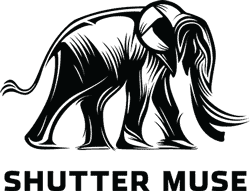








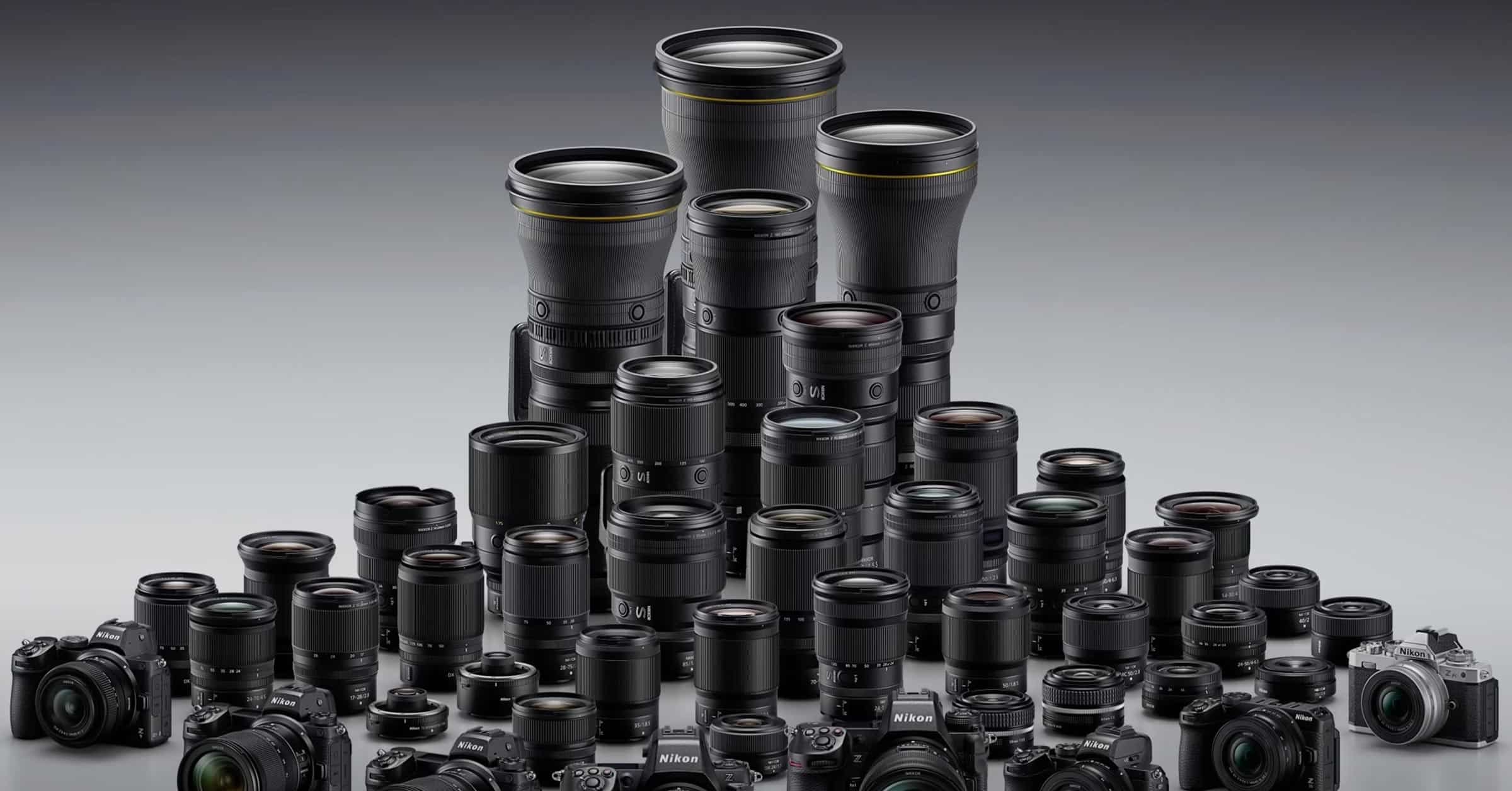


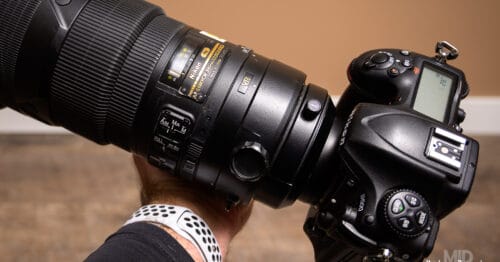
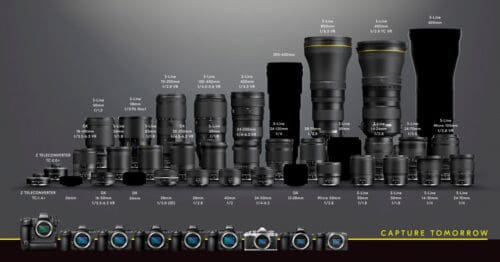


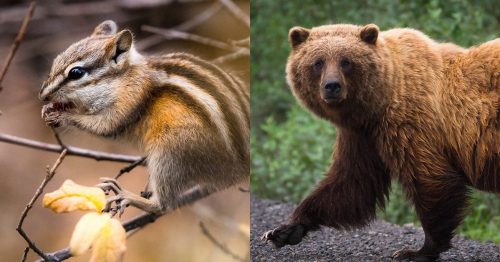
I find it interesting that you think the Z9 ergonomics are better. Many I talk to feel opposite, that the Sony A1 +grip still feels better in their hands, along with better button placement and superior customizablity.
I will also note that Mark Smith Photography has also made similar comments about the Z9 AF being inferior to both the Sony A1 and Canons latest R5/R3. Right now I’d say the A1 +600GM are still king when it comes to birding/wildlife. Getting the job done for $20k doesn’t seem like a good investment to me… I’d expect a lot more. But that’s me
Ergonomics will always be something of a personal thing. Hand size and finger length play into these things, and we’re all different there. While I agree that button customization is better on the a1, this is also something Nikon has worked on through the v2 and v3 firmware updates. You can customize a lot more than you used to be able to on the Z9. The three custom buttons on the front of the Z9 are also a huge bonus. You can assign three different AF modes to these buttons if you want. The Sony a1 has zero buttons on that part of the camera. To me, the Z9 feels right in my hand. The Sony a1 isn’t bad in this regard; I just happen to prefer the size and shape of the Z9, as well as the fact that it has way more buttons.
As for “getting the job done” perhaps you have taken this statement more negatively than was intended. When you buy a professional tool for a professional job, you hope it gets the job done with no fuss. The Z9 does, in all but a small number of niche cases. Most shots are in focus, full of detail, with good dynamic range, and exhibiting low noise. I’m not sure what “expect a lot more” can look like when a camera can tick all those boxes on most days, so I think perhaps my turn of phrase was poorly chosen. I certainly don’t want people who are heavily invested in the Nikon system to think the Z9 is no good suddenly. It’s a great camera! That said, I agree the gold standard for birds and wildlife is still the Sony a1 and 600mm GM. I was also testing the new a7R V in California, and Sony’s new AI AF system is otherwordly. When that comes to an a1 II, it will blow people away.
I’ve seen videos of z9’s and snowy owls and AF was flawless… Can you explain this?
Not really. But here’s the thing: If I wanted to show you videos that made the AF look flawless with white birds, I could do that. It would take me a long time to get one, but give me half an hour and enough white birds flying around, and eventually, the camera would lock on, and I’d get a shot that made it look like the AF was flawless. Unfortunately, this is one of the biggest problems with the internet and to a large extent, content from many YouTubers. It’s incredibly easy to make things look better than they are, simply by only showing the “good bits”. So that’s one potential explanation.
Another potential explanation is that the Z9’w bird detection is simply better with owls for some reason. The camera doesn’t treat all birds the same. It’s great with eagles, good with pelicans but poor with swans, where the long-necked profile seems to confuse it. That’s something the Sony a9 II used to struggle with too, so it’s not uncommon. All that is to say that it could also simply be an issue with small white birds, and not just white birds.
Thirdly, there are undoubtedly lighting situations where this issue will be better and worse. It seemed to be particularly bad when the birds were in full sun. Of course, it can then be a combination of all these things. All I can do is report my findings honestly.
I have been shooting the Z9 since the 2nd batch (Jan 13 2022) and have had no issues with white birds, regularly shooting gulls, terns, Great and Snowy Egrets along with juvenile Little Blue Herons (panning practice when nothing else is about) from FW 1.10 to the latest FW 4.0.
I have consistently had a hit rate of 80-90%. You are either using the wrong AF mode or maybe your Z9 needs to go Nikon for calibration?
50,000 shots is not the requirement to truly learn the Z9’s AF system but time. I find most people need 4-6 months in a lot of scenarios. I mean you can learn that 3D works best in a scenario and Wide Area in another and Auto in yet another. But even when they all work in their scenarios 90% of the time, they will not in rare occasions and you need to know what to switch to and not just keep pumping the AF ON button.
It’s not an AF system issues if only some people complain of an issue but the large majority don’t experience that issue.
I’m glad the Z9 suits your needs. I agree that time is important to understand the oddities of the Nikon AF system, but that is a failure in itself. Why should people be happy that, after buying a flagship camera, they have to spend 4-6 months using it before they can understand how to get a good keeper rate?
Many people buy cameras like this to take them on a small handful of nearly-once-in-a-lifetime trips. Should people be ok with the fact that they will have a low keeper rate and miss critical shots during all of their first trips? How can I recommend a camera that has this requirement when I don’t see the same thing with flagships from other manufacturers? Not everyone has 4-6 months available to practice with a camera.
And on this point, for other people reading this, I’m not saying there should never be a learning period with a camera. There has to be. They are just so complicated these days. However, with my Canon and Sony cameras, it feels like that learning period is spent learning about how to set up the camera, and what features are available. With the Z9, my learning period, which included two long international wildlife photography trips, was not learning the camera functions, it was learning about how to overcome deficiencies and weaknesses in certain AF modes to try and help it keep pace with my other cameras from other brands.
And look, it didn’t stop me buying a Z8, even though this has the same AF system. As a whole, these cameras have a lot of benefits and AF performance isn’t everything. But, I stand by what I’ve said about the AF system. When you have Nikon ambassadors openly posting about AF frustrations on their YouTube channel (see Morten Hilmer’s Z8 video), you know there is room for improvement.
By the way, Eric, lovely photos on your Instagram account. But I scrolled back through probably the last 100 or so photos on there, to a date before the Z9 was launched, and didn’t see a single photo that matches the scenario I have described. A white bird on a bright ocean background. So perhaps you haven’t encountered the “perfect storm” scenario yet.
I agree with your comments. I have a z9 and it has a problem when shooting birds in oak trees with dark leaves especially when shooting male cardinals. The AF system doesn’t hit the eye almost everyany bird is in a tree with dark leaves. I use a prime 600, 28-400 and a 70-200mm. The camera should be better at tracking birds.
I agree with your comments. I have a z9 and it has a problem when shooting birds in oak trees with dark leaves especially when shooting male cardinals. The AF system doesn’t hit the eye almost everyany bird is in a tree with dark leaves. I use a prime 600, 28-400 and a 70-200mm. The camera should be better at tracking birds.
Have experienced a similar problem, not a completely white bird but a rather light coloured short eared owl head on. Often not a problem, but when flying low over contrasty grass and with contrasty trees in the background in low sunlight (from behind), the AF seemed to struggle a lot. Had to lower the lens and focus on the grass below and then up on the owl again. Experimented with Dynamic Area modes, 3D, and the usual Wide-Area modes but half the time without the expected quick focus acquiring. To me the problem is white or almost white birds in combination with complicated backgrounds. A darker bird or a brown hare in the same surroundings and lighting didn’t give focus problems to me.
Interesting! Thanks for sharing your experience, Jacob.
I am glad I found this article I thought I was going nuts – and you don’t seem to see much about this on the web – I enjoy photographing wildlife with my Z9 – especially sea birds and waders on estuaries – and unfortunately I also find for whatever reason the z9 struggles, or completely fails, in many scenarios with white or very light or predominately white birds such as heron gulls, black headed gulls, egrets etc in flight unless it is a high contrast scene which isn’t always that common in nature. Darker birds tend to have no issue at all and the auto focus works bang on. I am using firmware 3.10.
I do wonder if it’s a hardware limitation or this fault can be addressed by a firmware upgrade.
HI
I am very disappointing with my Nikon Z9 in bird photographing.
When I am trying to to focus a bird (all kind of colors)with against mixed background and a distance more then 30 meter or even less , the auto focus don’t work at all the most of the times.
I have the last firmware in the camera and I am using the Z9 with the Z 400 mm most of the time but the problems are the same with the 500 mm G f4.
I must admit that I’m surprised to hear you say “most of the time” you are having problems. I do have problems, but I would say it works more often than not. Would you mind explaining more about your AF setup? Which focus modes are you using? How do you have your focus buttons set up? Perhaps I can help a little if I know this.
I’m here because i can’t believe how often I am missing with the Z400 w/TC. When i look at the focus area in NX.. the Camera seldoms sees the face of Osprey. 20 meters away. Will try 3D to see if i get better results or will have to try to traditional dynamic but the camera is not detecting osprey for me.
This is an older article, and as far as I can see, the issues were fixed with the recent firmware updates. Are you sure you have updated your firmware? I think the Z9 is up to v5 now, and it is a dramatic improvement over what was available when I first wrote this piece.
Perhaps an update to this article is in order? I read it today and noticed you were using older firmware. Noting the update fixed things in the heading would be helpful instead of having to scroll through comments to find that you now see “a dramatic improvement over what was available when I first wrote this piece.” Not a criticism just a thought to assist those wondering if there is still an issue.
Thanks for the note. I have added an addendum to the first paragraph.
I also noticed the same issue when shooting little terns in the past few days. The Z9 refuses to lock onto the bird until it breaks water in its dive. It is as if the bird is transparent even though it is hovering right in from of me at the centre of the frame. It is very frustrating. My friends using Sony and Canon have no problem with the terns. I am using firmware 3.10 and encounter this only when shooting small white colour birds with complicated background. Hope Nikon can sort this out in future firmware.
Thanks for adding your voice and experience to the discussion, Peter. Yes, this particular Z9 trait is an annoyance. And I expect to see the same problems when my Z8 arrives in a few days. As you say, these scenes are not an issue for Sony and Canon AF systems. My Sony a1 has no such issues, and even my cheap Canon R7 does at least as well as the Z9 in this scenario.
Hi Dan !
Thanks for your topic. I’m currently photographing birds with 2 Z9 and 1 Z8 bodies: in many crucial situations the AF is just not working !!! If there will not be very soon a firmware update to fix this nightmare, I’ll switch to the A1, following several of my friends. A pity, after 40 years of loyalty to Nikon. Herons, storks, … just some meters in front of different Nikon pro lenses, with different AF modes: sharp backgrounds, with big white, grey, … unreconizable, blurred spots. Too much is too much !!! Best regards, Paul
Hi Paul. I’m sorry you are having all this trouble. I do feel your pain. I swapped my Z9 for a Z8, but expect it to be the same as it seems to have been for you. Thankfully I still have my Sony A1/+ 600mm f/4 GM combo for the really tricky AF situations. It’s a shame because I do prefer the user experience wit he Z9, and now the Z8. But nobody wants to feel frustrations. And I’d bet it is worse when you are standing next to friends who have an A1!
Hi Dan,
Thanks for the insightful post. I have this exact same issue with Barn Owls. On both Z8 and Z9. No matter what I do with the AF settings I can’t seem to get it to reliably give me sharp images. In FW 4.0 the Z9 has improved from being a blurr mostly to thinking it has a lock but when you look the images are all soft.
Shooting with the 600 TC and 400 TC.
Infuriating to say the least especially considering the size of the investment and that is primarily what I want to shoot. Anything else I point it at is almost faultless..
Really hope Nikon fix it soon.
Mark
While on doing internet search on Z9 focus tracking I came upon this very well written article and thoroughly enjoyed reading it. The use case described here (tracking mostly white tern in flight or stationary) is what I have initially gone through since I bought my Z9 in August of 2022. Last year I found 47% of Osprey diving shots (not as white as a Tern) were out of focus compared to my D6 which had 32% of shots out of focus under very similar conditions. I was contemplating returning my Z9 and staying with D6. After a few firmware updates and switching to native Z lenses I now find that the focus tracking gotten a lot better no matter what the color of the bird is. Yesterday (June 25), for example, I shot a few diving shots of a Herring Gull (very much like a white tern, slightly bigger and some grey on its wings) using Z9 with FW version 4.0 and 400mm TC set to 560mm. The Gull was following a cargo ship on Lake Ontario, looking for easy meals in the form of stunned fish. In one example I had 42 consecutive shots of the gull diving from blue sky, through green background trees and finally on to water. I was glad to see that all were in focus. The bird was somewhere at a distance of about 50 meters from where I was standing. I had my Shutter release button is programmed for Dynamic L and the Back button is for 3d focusing. I usually start with Dynamic L when and then switch to 3d unless it is a stationary bird, in that case I start with single point and then switch to 3d in case it suddenly takes flight.
In case any one wondering, about a month ago I did some tests with diving Ospreys too using Z9 (it was 3.1 FW at that time), z400 tc with 2.x attached. Compared to last year’s 47% out of focus shots, this time I had somewhere between 2-11 % – a marked improvement.
Great article, and very true, even with firm 4.00.
What makes it worse is having had experience with Olympus tracking that is impecable (M1X and OM-1). Maybe it’s Olympus cross type sensors, which has been ignored by Nikon in all Z’s in favor of subject or eye detect.
Great, if eye stay in focus plane, but if fall, tumble or flip, eye detect fails even if a3 set to erratic or delayed….. 3D AF will also jump to white vertical poles , white water caps. You get great technical shots, but not the one you selected and wanted. Witness the pictures in Z9 SIGs.
Thanks for adding your experience, Jean-Baptiste.
Thank you for your article, Dan!
I have set up my Z9 with FN1 as AF-On Single Point to grab focal plane, FN2 as AF-On 3D, and use a normal back-button focus varying setting from Custom Wide to other wides, and metering either with Center-Point or Matrix. Regardless, of what I try I am not pleased with the results to capture eye-focus on our backyard birds.
I tried a Sony A7R V and the hit rate seemed much higher. Now, I am wondering if I should trade in my 7-month old Nikon Z9 and Z7 II for either the Sony A1 or Sony A7R V. I love how the Z9 feels in my hands, but I prefer to get much better accuracy when I snap photos.
What are your thoughts? Have you found better Z9 settings? I am on firmware version 4.01.
Thanks,
JP